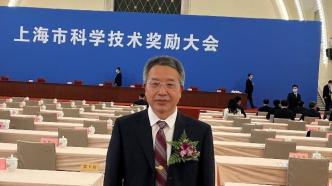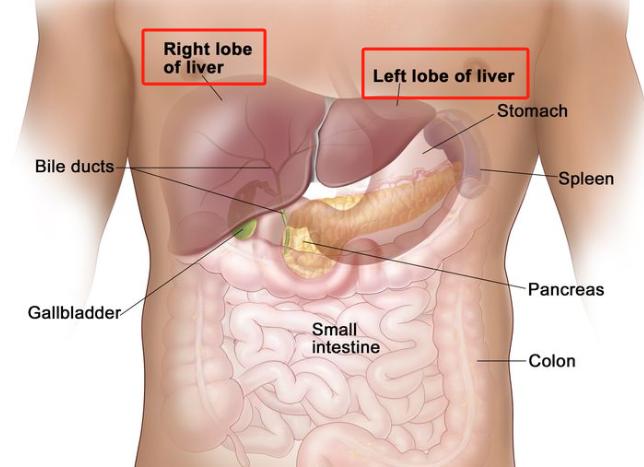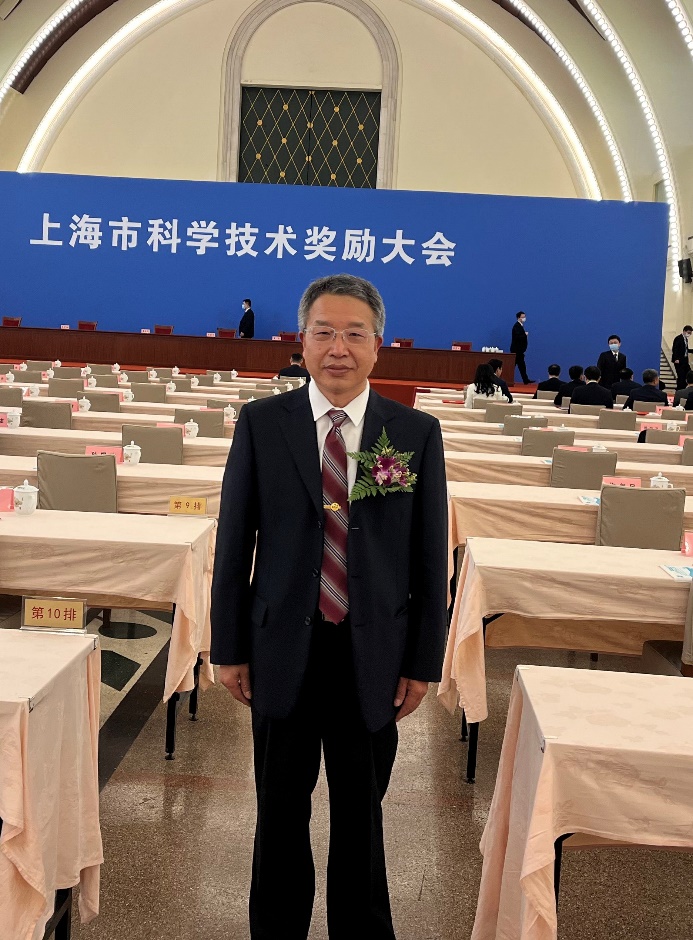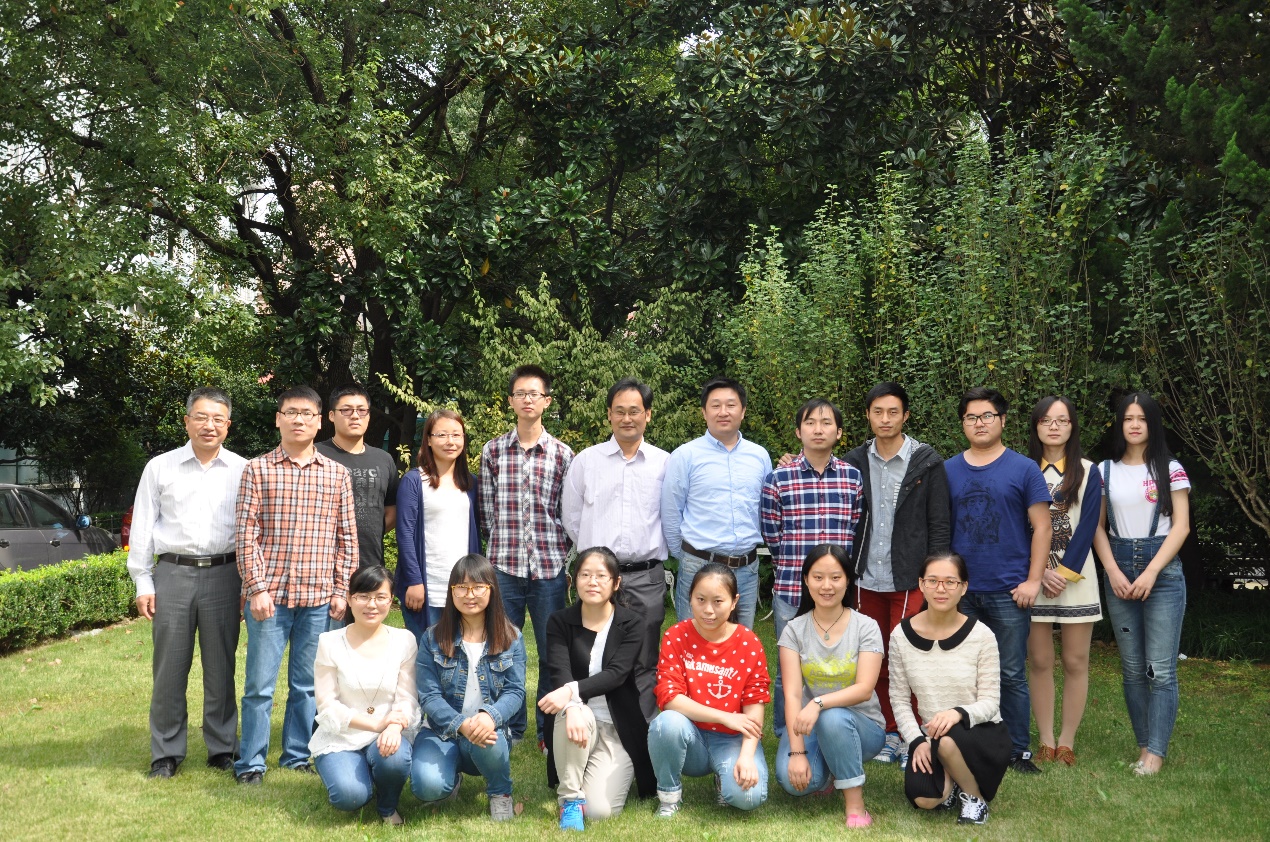
[Editor's Note] With the support of Shanghai Municipal Science and Technology Commission (Project No.: 22DZ2304300), The Paper and World Science have jointly conducted popular science reports on the achievements that have won national and Shanghai science and technology awards. This report focuses on the 2022 Shanghai Natural Science Award Second Prize Project "Research on the Progression and Drug Resistance Mechanism of Liver Cancer", which was won by Li Jinjun, a researcher at the Shanghai Institute of Oncology.

Schematic diagram of the liver.
The liver is the largest digestive organ in the human body and also the "chemical factory" in the human body.
Liver cancer is a major public health challenge worldwide.
my country is a "liver cancer superpower". According to statistics from the World Cancer Research Fund International, in 2020 alone, there were more than 900,000 new cases of liver cancer worldwide, of which my country had 410,000 new cases, accounting for 45.3% of the total liver cancer cases worldwide.
The relevant death data is also shocking. In 2020, liver cancer took the lives of about 830,000 patients worldwide. In China, the number of new deaths from liver cancer exceeded 390,000, accounting for 47.1%, nearly half.
There are two reasons for the high incidence of liver cancer. One is an unhealthy lifestyle. Toxic substances such as nitrites in leftovers, excessive drinking, and hepatitis viruses such as hepatitis B and hepatitis C put the liver in a "dangerous" situation. The other is the metastasis and recurrence of liver cancer caused by drug resistance.
Liver cancer is more complicated than other cancers, and it is more difficult to achieve practical research results. Li Jinjun, an expert who has participated in the Shanghai Leading Talent "Local Team" Training Program and the "New Century Hundred Thousand Talents Project" national talent training program and has worked in the field of liver cancer for many years, and his team members rose to the challenge and focused on the research of liver cancer metastasis and drug resistance, with a focus on hepatocellular carcinoma.
Li Jinjun said, "The liver has powerful functions. What we eat needs to be digested and absorbed by the liver. In addition, the liver is also a blood storage and extramedullary hematopoietic organ. Its functions are more complex, and the heterogeneity of the tumors it forms will be greater."

Li Jinjun at the Shanghai Science and Technology Awards Conference.
In May 2023, the project "Research on the Progression and Drug Resistance Mechanism of Liver Cancer" led by Li Jinjun won the second prize of Shanghai Natural Science Award. The relevant research results not only revealed the drug resistance mechanism of liver cancer, but also provided new strategies and directions for the treatment of liver cancer.
Uncovering the mystery of liver cancer metastasis and drug resistance
There are three main traditional treatments for liver cancer: surgery, chemotherapy, and radiotherapy. Each has its own advantages and disadvantages. For example, surgery is more invasive, chemotherapy has fewer effective drugs, and radiotherapy has the risk of activating the hepatitis B virus.
Drug resistance to cancer treatment drugs can be divided into two main categories: primary resistance and acquired resistance. Primary resistance refers to the natural tolerance of tumor cells to therapeutic drugs, which reduces the effect of the drugs. Acquired resistance refers to the gradual adaptation of tumor cells to drugs over a period of time after the patient receives treatment, which reduces the therapeutic effect.
Li Jinjun said that liver cancer is a particularly complex cancer, and its primary drug resistance rate is relatively high. "Every time a cancer cell is 'killed', another cancer cell may grow out."
Faced with this dilemma, Li Jinjun's team, after more than 20 years of in-depth research, discovered a series of molecular mechanisms related to drug resistance, providing important clues for us to understand the causes of drug resistance in liver cancer, as well as new targets and strategies for the treatment of human hepatocellular carcinoma.
First, Li Jinjun's team studied the impact of hypoxic microenvironment on liver cancer progression and drug resistance mechanism.
Hypoxic microenvironments are common within tumors, which not only promote tumor growth, spread, and drug resistance, but also affect the expression of genes related to cell survival, proliferation, and drug resistance.
Li Jinjun's team found that hypoxia increases the HIF-1α transcription factor in the body, which in turn leads to increased secretion of ANGPTL4 protein, which makes liver cancer cells more likely to metastasize through the VCAM-1/Integrin β1 pathway. They also found that the amount of ANGPTL4 protein in the blood may be used to determine the progression of liver cancer and the effectiveness of treatment.
Secondly, previous studies have found that CD133 can enrich tumor stem cell subpopulations in human hepatocellular carcinoma (HCC), but not all CD133+ cells are true stem cells. Li Jinjun's team has demonstrated that the co-expression of CD133 and CD44 can more accurately define the phenotype of liver cancer stem cells, especially CD133+/CD44+ double-positive cells. This is of great significance for better understanding the occurrence and development of liver cancer and finding therapeutic targets.
CD133+/CD44+ cells may represent a true HCC stem/progenitor cell subset. Such cells exhibit typical stem cell properties, including abnormally high proliferation potential, self-renewal, and the ability to differentiate into non-tumorigenic cells.
In addition, BMP4 protein plays a key role in normal liver development and liver stem cell differentiation, but its role in liver cancer is still unclear. Li Jinjun's team found that high concentrations of exogenous BMP4 can promote the differentiation of CD133+ liver CSCs (cancer stem cells), causing the differentiated cells to lose their self-renewal ability, weaken chemotherapy drug resistance, and inhibit tumor formation in vivo.
Li Jinjun explained the multi-drug resistance of liver cancer in layman's terms. He said, "Tumor cells are 'very smart' and can change or lose targets: they can resist drug attacks by changing their own structures or losing specific markers. Tumor cells can even change the structure of markers, making drugs lose their effect on them. This 'intelligence' of liver cancer cells makes treatment more difficult. Therefore, treatment requires a multi-pronged approach, using combined therapy or different treatment methods to improve the treatment effect."
Li Jinjun introduced that there are also many challenges in current treatment. "One of the problems is the rising economic costs, which increases the economic burden of treatment. In addition, for some patients, treatment may cause a series of side effects, including hair loss, vomiting, and heart problems. Due to these problems, many patients may choose to give up chemotherapy and choose palliative treatment, also known as conservative treatment."
Hope that the research results will enter clinical practice
Targeted therapy related to liver cancer drug resistance can be seen as a new direction in the current treatment of liver cancer. Exploring the molecular mechanisms that affect the occurrence and development of liver cancer, and then discovering new strategies for effective treatment of liver cancer and applying them to clinical practice as soon as possible will benefit more liver cancer patients.

A group photo of Li Jinjun and his team members.
However, there is still a long way to go before the research results related to liver cancer can be applied to clinical practice.
Currently, in the field of liver cancer treatment, hundreds of markers for diagnosis, treatment effect evaluation and prognosis have been discovered around the world. However, due to the complexity of liver cancer, only a very small number of them have been applied in clinical practice.
"Specifically, there are two aspects of liver cancer tumor markers involved - specificity and sensitivity. In diagnosis, specificity and sensitivity need to be balanced. If the sensitivity is very high and the specificity is low, misdiagnosis may occur; conversely, if the specificity is very high and the sensitivity is insufficient, missed diagnosis may occur. These two characteristics determine that the research entering the clinic is a long verification process." said Li Jinjun.
"In the 1990s, at the invitation of Academician Gu Jianren, I came to the Shanghai Institute of Oncology to conduct liver cancer research." Researcher Li Jinjun said that this choice led to his hard work for more than 20 years.
For more than 20 years, Li Jinjun and his team members have focused on experimental research to improve the diagnosis and treatment of liver cancer.
He said he hopes to help people better understand liver cancer, optimize diagnostic methods, optimize treatment methods, and allow these research results to enter clinical practice. "If the research is just published and patented without the possibility of clinical application, then it is a 'waste of money'. If it can solve major medical problems, researchers will also feel a great sense of accomplishment."
References
1. What Is Liver Cancer?.NIH.
2. Liver cancer statistics. World Cancer Research Fund International.
3. Research progress | Cancer Research magazine published the research results of Li Jinjun and Li Hong's team, "New Mechanism of Hepatocellular Carcinoma Progression". National Key Laboratory of Tumor Systems Medicine.
4. Congratulations! | The project "Research on the Progression and Drug Resistance Mechanism of Liver Cancer" led by Professor Li Jinjun of our institute won the second prize of Shanghai Natural Science Award. Shanghai Institute of Oncology.
5. Li Jinjun introduced. Shanghai Institute of Oncology.
6.Understanding and targeting resistance mechanisms in cancer.NIH.
7. Why is the incidence of liver cancer so high in China? .China Anti-Cancer Association.


